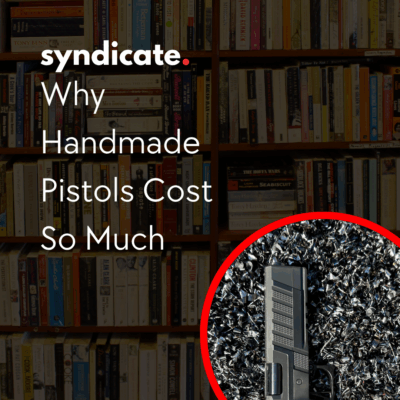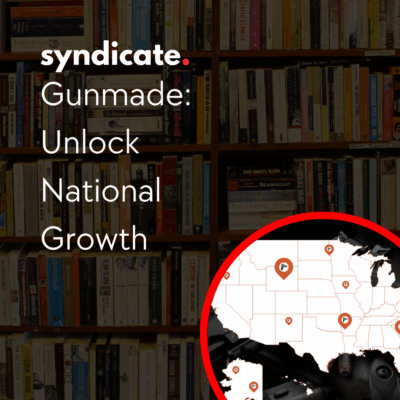Why Handmade Pistols Cost So Much: The Real Story Behind the Price Tag
For those of us who’ve watched the meteoric rise of the double-stack 1911, there’s one question that still makes even the most devoted fan wince: “Why do they cost so much?” What could possibly justify a price tag that’s sometimes ten times higher than a polymer pistol?
The short answer is: everything. From raw materials to hand-fitting, from overhead to excise taxes, every part of the process adds cost — and every cost adds performance. A true handmade pistol isn’t just a firearm; it’s a fusion of engineering, craftsmanship, and obsession. And once you understand what goes into it, the price starts to make a lot more sense.
Premium Parts: Where It All Begins
Every great pistol starts with great bones. A top-tier, handmade double-stack 1911 doesn’t begin life as an off-the-shelf slide and frame. It starts with premium components — often sourced from the few suppliers in the world who can meet the tolerances required for a high-end build.
Those raw parts and coating usually cost $2,500 to $3,000, and that’s before you add accessories like magazines, cases, or custom boxes. Scarcity plays a role too. There simply aren’t many companies producing match-grade components, and some won’t even sell to competitors, which pushes the price up further.
Then there’s the problem child of every handmade build: coatings. Whether you’re dealing with DLC, nitride, or Cerakote, the finish is both essential and maddening. As we say around the Syndicate, “It’s not the coating… it’s always the f**ing coating.”* A bad finish can ruin an otherwise perfect build, so the attention (and cost) dedicated to getting it right is non-negotiable.
And remember — not every part makes the cut. Even in the best shops, a percentage of components fail to meet spec and end up as expensive scrap. That’s baked into the cost too.
The Unsexy Stuff: Overhead
Nobody wants to talk about it, but overhead matters. Rent, utilities, insurance, depreciation — all the boring business expenses that keep the lights on and the CNC machines humming — usually add 25–35% to the total cost.
Using our $2,500–$3,000 parts estimate and a 30% overhead figure, we’re already looking at $3,250 to $3,900 before a single craftsman picks up a file. And yes, before you ask, coaters are craftsmen. But I’m leaving them out of this section because — say it with me — it’s always the f**ing coating.*
Labor: Where the Magic Happens
Now we get to the part that truly separates a handmade pistol from a production gun: skilled human labor.
Mass-produced pistols are assembled by machines or line workers following a script. A handmade build, on the other hand, is a slow, deliberate process of hand-fitting, polishing, tuning, and testing. Gunsmiths spend hours ensuring the slide-to-frame fit is perfect, the barrel locks up consistently, the trigger breaks like glass, and every surface is polished to reduce friction and wear.
That labor isn’t cheap. Even using a conservative shop rate of $75 an hour, and a range of 2 to 20 hours of work per gun, labor alone can add $150 to $3,000 to the total. That pushes the pre-profit cost to somewhere between $3,400 and $5,400 up to 10 hours.
The Tax Man Cometh
We’d be remiss not to mention one final mandatory expense: the federal excise tax on firearms. Add 10% to whatever number you’ve been tallying, and now your build is sitting at roughly $3,730 to $5,900 — before the manufacturer or the dealer makes a cent in profit.
The Margins
The manufacturer and the dealer would both like to get paid. If you Google manufacturing margin, you will find a myriad of numbers from 20% to 60%. For both the Manufacturer and the dealer, I am going to add 20% compounding. This brings the retail price range for a premium pistol to $5371.20 to $7776.00. This would be a good time to reference the price band analysis we did a few weeks ago. You will see the trend.
Beyond the Price Tag: The Real Value
When you look at the numbers, the cost of a handmade pistol is easy to break down: materials, overhead, labor, taxes, and margin. But that’s only part of the story. The real value comes from everything you can’t quantify — the skill of the craftsman, the pride of ownership, the joy of shooting something built for you and no one else.
A production gun will always have its place. They’re affordable, reliable, and perfectly serviceable. But a true handmade pistol is something more. It’s a mechanical expression of precision, individuality, and passion. It’s the result of thousands of decisions — each one made by someone who refuses to accept “good enough.”
So the next time someone asks you why a handmade 1911 Doble Stack costs north of six grand, you can tell them the truth: because it’s worth every penny.
PS, if you still don’t believe me, come spend a day at the Syndicate. You’ll see why we say it’s not the coating — it’s always the f**ing coating.*



